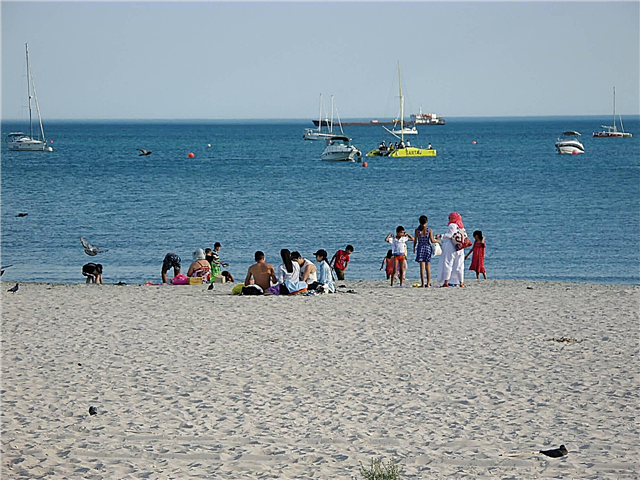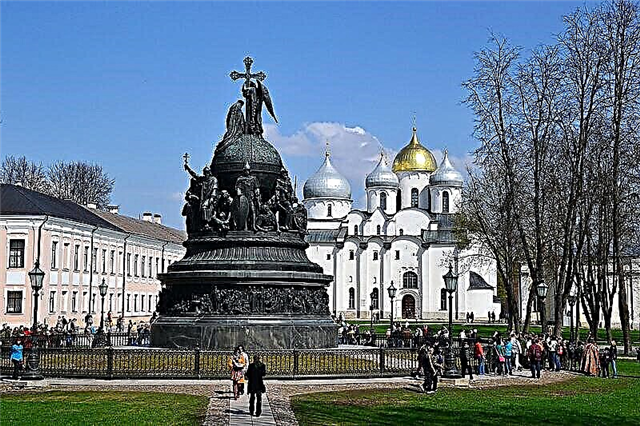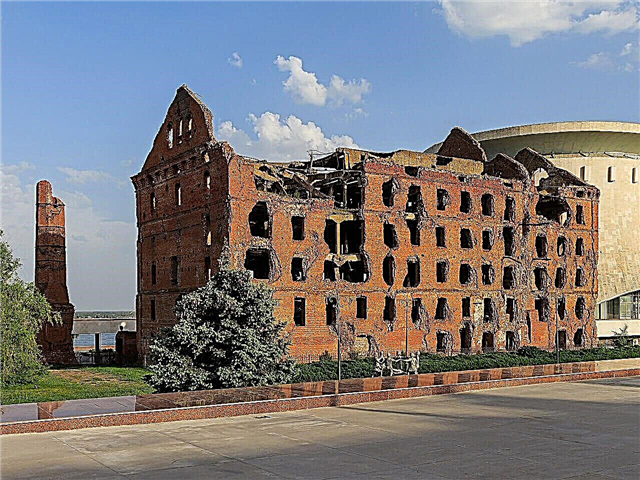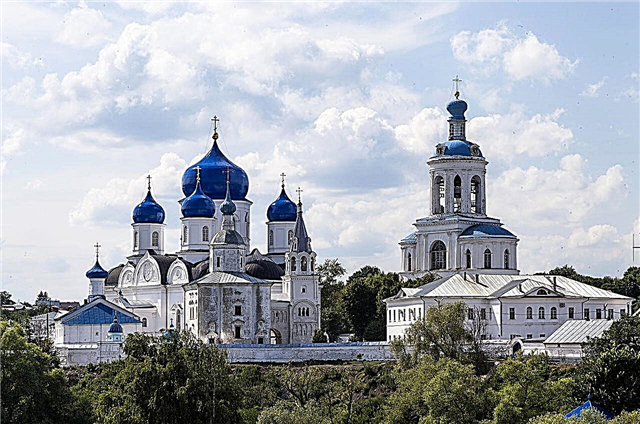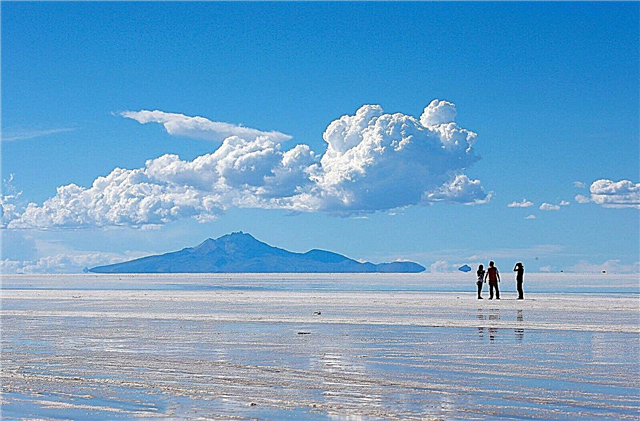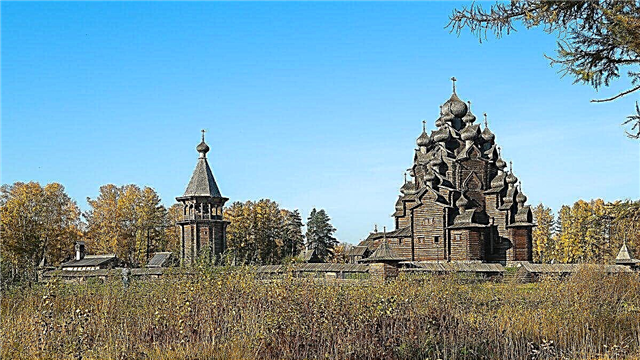The Leningrad Region has spacious territories filled with amazing nature. At the moment, there are 53 complexes in the region with a valid environmental status. These are reserves, sanctuaries, natural monuments, and protected natural landscapes.
There are no national parks in the Leningrad Region, but other protected areas are of great interest for modern tourism. Groves, lakes, forests and even islands are accessible to tourists all year round. Some natural monuments have a well-developed tourist infrastructure. Others are hard to reach, but worth the effort and see them with your own eyes at least once in your life.
Natural reserves of the Leningrad region
List of the most interesting and popular protected areas in the region.
Reserve "East of the Gulf of Finland"
The unique reserve includes 9 islands and their nearby water area. "East of the Gulf of Finland" has federal significance, has an area of over 14 thousand hectares. The nature conservation monument was created to preserve the seals' campsites, as well as the migration routes of rare migratory birds. The protected complex includes the islands of Kopytin, Dolgiy Kamen, Bolshoi Fiskar and other island formations. The process of creating the protected area took 20 years and ended in 2017.

Nizhne-Svirsky reserve
The reserve's water and wetlands are of international importance. The places are important not only because of the flora in the Red Data Book, but also because of the nesting areas of various bird species. The reserve is based on the right bank of the Svir River. The protected area occupies 41 thousand hectares of land. The reserve is home to 44 species of mammals, 256 species of birds, as well as 538 species of vascular plants. The Ladoga seal is endemic to the aquatic part of the reserve.

Main sanctuaries of the Leningrad region
The most interesting and popular nature reserves in the region.
Mshinskoe swamp
The federal reserve is based in the Gatchinsky and Luga regions. Occupies an area of 60 thousand hectares. In winter, it is much easier to get to the Mshinsky swamp, in summer there are several trails. On the territory of the reserve there are swamps, forests, meadows and the watershed of the rivers Oredezh and Yashcher. The place has become a nature reserve due to the unique flora and nesting sites of waterbirds. Also on the lands of the Mshinsky swamp there are lakes where valuable species of fish are found.

Reserve "Kokkorevsky"
The environmental object has an area of 2304.7 hectares. The reserve borders on the Petrokrepost bay. The area is home to white-tailed eagles, auk, ducks, swans and terns. Aldrovanda bladder is a rare plant species on the territory of the Russian Federation, which grows precisely in the Kokkorevsky reserve. The cordial linden is also the pearl of these places. Ermines and foxes, as well as rodents and raccoon dogs, represent the class of mammals in the reserve.

Reserve "Lisinsky"
Since 1805, the Forest Institute of St. Petersburg has been conducting field training in the Lisinsky reserve. The area of the reserve is 28 260 hectares. Wood grouse and black grouse are habitual inhabitants of these territories, although in other places of the Leningrad region they are rare. Also in Lisinskoe bears, martens and foxes are found. Rare plant species grow, coniferous forests with rich mixed undergrowth grow.

Lindulovskaya grove
The reserve is located in the Vyborg district near the village of Roshchino. Area - 986 hectares. The oldest Siberian larch plantation in the Russian Federation is located in the Lindulovskaya Grove. The future reserve was founded by Peter the First. Some larch trees in the grove reach 40 meters in height. The natural site is on the UNESCO list of protected areas. The river Lindulovka flows in the reserve, which gave the name to the grove.

Reserve "Vyborgsky"
The area of the reserve is approximately 11 thousand hectares. It is located at a distance of 10 km from Primorsk. Vybsky includes a peninsula and several islands. The preserve is dominated by pine trees. Vyborgsky was created to preserve the unique nature of these places. In addition to migratory birds and mammals, the reserve is also home to large bat communities. The Kyperort Peninsula is a popular ecotourism destination.

Lammin-Suo Swamp
The state reserve has an area of 392 hectares. The hilly area in the center has a pit where the Lammin-Suo swamp is based. The research base of the Hydrological Institute operates in the swamp. The fauna of the area is typical for the lands of Karelia. In the reserve you can find shrike, partridge, golden plover and other birds. The slopes of the hills near the bog are covered with pine forests with varied undergrowth.

Preserve "Gladyshevsky"
The purpose of the creation of the protected area was the population of salmon and the European pearl mussel. Rare species are on the verge of extinction. The area is over 8 thousand hectares. The Gladyshevka River and the lake of the same name with the reserve are part of the nature protection zone. Dipper is also found in this area - the only species of sparrow that can dive under water. Ferrets, badgers, wild boars and moose represent the mammals in the reserve. Gladyshevsky is regularly used for environmental festivals.

"Vyaryamyanselka Ridge"
The moraine ridge stretches along the Vuoksa and Sukhodolskoye lakes. The area is about 7 thousand hectares. The width of the ridge varies from 1 to 3 km. The height is 30 meters. The ridge unites more than 30 lakes of glacial origin. Swamps and pine forests are densely populated with local flora and fauna. Dipper, swans and ducks can be found here. The ridge also includes swamps and small areas of forest-steppe.

"Cancer lakes"
The reserve includes lakes: Rakovoe, Bolshoye and Maloe. The area of the natural monument exceeds 10 thousand hectares. "Cancer lakes" are part of the Vuoksa river system. The ecosystem of the lakes is characterized by wetland flora and fauna. The gray goose and other migratory birds live in these places. About 277 bird species can be seen on the lakes at different times of the year. Reeds and reeds grow along the shores of the water reserve. The lakes are surrounded by coniferous and mixed forests.

"Birch Islands"
The archipelago near the Vyborg water area has a total length of 31 km. The islands became a nature reserve thanks to the breeding sites of the Baltic seals. The area is 5 thousand hectares. The flora of the islands is very rich and includes more than 800 species of mushrooms, 60 species of algae, 680 species of plants, as well as mixed forests, dunes and hills. In addition, 80 bird species nest on the islands. The seal breeding area is located in the southwest of the archipelago, where there is ice near the coast in winter.

Reserve "Kurgalsky"
Consists of the mainland and the islands of the Gulf of Finland. The area is 60 thousand hectares. About 750 species of higher plants grow on the lands of "Kurgalsky". Over 250 species of birds nest in the reserve. A section of the Nord Stream 2 gas pipeline passes through the natural landmark. Seals and seals live in the water part of the reserve. The local forests are home to bears, wolves and wild boars.

Reserve "Lebyazhy"
In the south of the Gulf of Finland, all areas near the coast are part of the Lebyazhye nature reserve. The area is 6 thousand hectares. The flora and fauna of the natural monument is diverse, almost 200 species of plants and animals of the reserve are listed in the Red Book. On the lands of "Lebyazhy" it is forbidden to hunt, fish, set up tents in the nesting places of rare birds. On the coast of the reserve there are built-up places where horticulture and villages are based, which are considered a threat to the local ecosystem.

Natural monuments of the Leningrad region
The most interesting and popular natural monuments in the region.
Hawk Lake
The reservoir is located 10 km from the border with Karelia. The area is only 1 km².The lake surface is surrounded by the cliffs of the Baltic Shield. The local rock Parnassus is a favorite playground for rock climbers. Since the nature around the lake is incredibly beautiful, tourist routes have been laid to this place, as well as parking for tourists on the lake itself. The shallow lake is home to pike, roach, perches and ruffs. Fishing is not very popular here, as local fish species are crushed and do not differ in species diversity.

Radon springs and lakes in the village of Lopukhinka
The hydrological landmark covers an area of 2.7 km². The springs look like springs with radon elements in the water. All springs feed the Lopukhinka river of the same name with the village. The springs flow together to form a valley with a canyon, the depth of which is 30 m. These springs are considered curative. Wonderful flora grows around them, as well as fauna, consisting of different species of birds.

The sources of the Oredezh river in the Dontso tract
Groundwater forms the beginning of the Oredezh River. The sources are located next to an artificial quarry, where very clean underground waters flow. Alvars (steppe meadows) are the main attraction of the source. In the Russian Federation, such places are not found anywhere else. The upper reaches of the famous river became famous thanks to the habitation of the Oredezh trout there. Mammals are represented by hares and hedgehogs, but there are so many rare plants growing along the banks of the sources that it would be enough to compile a separate book.

Devonian outcrops on the Oredezh River near the village of Belogorka
The natural monument is located in the Gatchina region. Area - 120 hectares. It is of interest because in the soil of this area there are fossils of Devonian shell fish and other living creatures. The visibility of the outcrop of the ancient rock reaches 55 meters. Only short-term tourist holidays are allowed in this area.

Lake Red
Lake Krasnoe is based on the Karelian Isthmus. The area is 9 km². A river of the same name flows out of the reservoir. The lake is home to the Red Book sculpin and 16 more species of fish. Also, rare algae grow in the reservoir, and unique plant species grow around. Not far from Krasnoye is the village of Korobitsyno.

Sablinsky natural monument
There is a whole complex of natural monuments in the Tosno region. Area - 328 hectares. The complex includes waterfalls, canyons, mountains, caves and surroundings with beautiful natural landscapes. The ancient burial mounds and sites of Alexander Nevsky are of particular historical interest. In these places, the tourist infrastructure is quite developed.

Koltushsky heights
Three sections of the Koltush Upland are declared natural monuments. There are also lakes in this area, the largest of which is Zhdanovskoye. Hills and cliffs are covered with taiga forest, which has long been over a hundred years old. The area is densely built up, so tourist routes start from different villages.

Other specially protected natural areas
Active and promising facilities in various categories of protected areas.
Natural park "Vepsian forest"
The indigenous people of these places, the Vepsians, still live in the park. Pine trees, lakes, rivers and waterfalls are the main decoration of the Vepsian forest. Extreme and rural tourism is developed in the region. The nature of the forest is considered to be primordial, since the hand of a person has not touched it. The area is 189 thousand hectares. The purpose of creation is to preserve a unique ecosystem.

Protected natural landscape "Lake Verojärvi"
The reservoir has an area of 42 hectares. The lake itself is located near Lake Ladoga. Picturesque lake shores attract many tourists to this region. The places cannot be called wild, people come here for walking along forest paths and feeding ducks in the lake. In the pond, you can catch bream or perch. Sometimes roach can also be found here. The depth of the reservoir reaches 4 meters.

Lake Vuoksa
The promising reserve is designed to preserve the Vuoksa lake-river system. Lake Vuoksa is located near the town of Priozersk. The area is 108 km². A reservoir of glacial origin is adorned with coastal islands. The largest island is Oleniy. Mixed forests grow on some islands of the reserve, while others are used as mows. Ferry crossings have been organized to the large island formations of Vuoksa.

Scientific Experimental Station "Otradnoe"
The promising nature protection zone, where the Otradnoye station is organized, is of great scientific importance. Rare plants are cultivated in the station's arboretum. Not only rare species, but also medicinal varieties of the local flora grow in the station's botanical garden. At the last count, the collection of the scientific organization includes 3464 taxa of various plants. The flora inherent in the reserve is still being studied today.

Peterhof water conduit and Porzolovskoe swamp
The water conduit and the swamp were included in the list of protected areas due to the fact that these objects feed the waterways of St. Petersburg and many other cities. The water conduit has become a monument not only because of its natural value. It is an excellent example of old hydraulic engineering. On its territory are the ruins of the Brantovka estate. The promising object covers an area of 5 thousand hectares.

Gogland Island
The developing reserve and St. Petersburg are separated by 180 km. The area of the island is 21 km². The hilly relief of Gogland consists of granite covered with a thin soil layer. Forests grow on the hills. Once there were villages on the island, today there is only a lighthouse and destroyed buildings. In this area, you can find seids and pre-Christian sacrificial boulders. Admiral Svyatov is also buried on the island. The ship "Leonid Demin", which has run aground, is standing near the coast.

The estate of F. F. Eberhardt "Sofievka"
In Vsevolzhsk there is an old estate "Sofievka". The park of this estate is recognized as a monument of gardening art. The local significance of the sight does not detract from its merits: arches, paths, ponds border with mixed forest and shrubs. The park's beautiful alleys have become a haven for small rodents and ducks. The large pond is home to ducks, which visitors love to feed.

The estate of A. N. Olenin "Priyutino"
Earlier, the Priyutino estate was owned by the president of the Academy of Arts Olenin. Today there is a museum in the estate. The park area of the estate is of particular interest. The local monument is ennobled with paths, benches and street lighting. Wonderful landscapes "Priyutino" attract many tourists to the estate.

Sports reserve "Toksovo-Kavgolovo"
The natural monument is based in the Vsevolzhsky region. There are numerous sports complexes surrounded by the wonderful nature of the Leningrad Region. Toksovo has ski resorts equipped with reliable lifts. All this beauty is based just 20 km from the Northern capital.

Nevsky forest park
The prospective reserve consists mainly of forests. Area - 600 hectares. On all sides, the Nevsky reserve is bounded by villages; the Chernaya River flows through its territory. In the west of the forest park there are estates and churches. Nevsky Forest Park is perfect for tourist recreation and long picnics.

Smorodinka river valley
The total length of the Smorodinka river valley is more than 2 thousand hectares. The promising nature protection zone has a varied relief. Currant is also interesting because it is the only spawning site for brook trout in this area. The spruce forests and swamps in the river floodplain provide an excellent basis for the development of rich undergrowth.

"Lizard-Lemovzha"
The reserve has an area of 22 thousand hectares. The purpose of creating the reserve was to preserve the unique natural ecosystem of these places. The complex includes the river Lemovzha, Luga and other drains, as well as lands in their valleys. Also, this territory is connected with part of the lands of the Priluzhny reserve. The tourist destination in these places is just beginning to develop.

Priory park
The natural monument is located in Gatchina. Area - 154 hectares. The facility consists of three lakes, recreation areas and woodland. The Priory Palace is based in the park. The cultural heritage site is considered a promising project for the development of the city's tourism sector.

Mon Repos Park
The Museum and Reserve possesses rare rock landscapes of the unique nature of the area. The main rocks of the park are located on the coast of the Vyborg Bay. Some parts of the park have been ennobled by hand. There you can see antique statues and examples of Russian architecture. At one time, artists from Venice and architects from England and France worked on the park.


